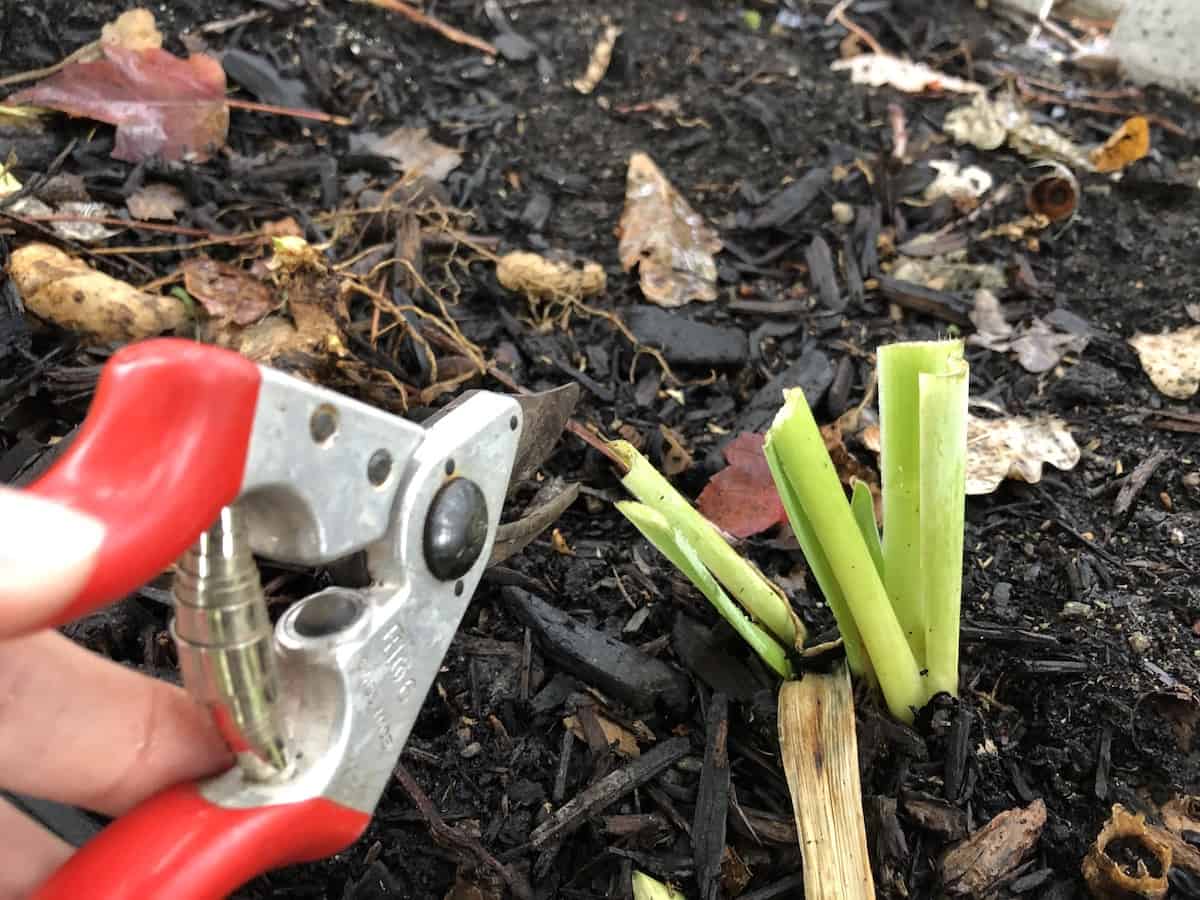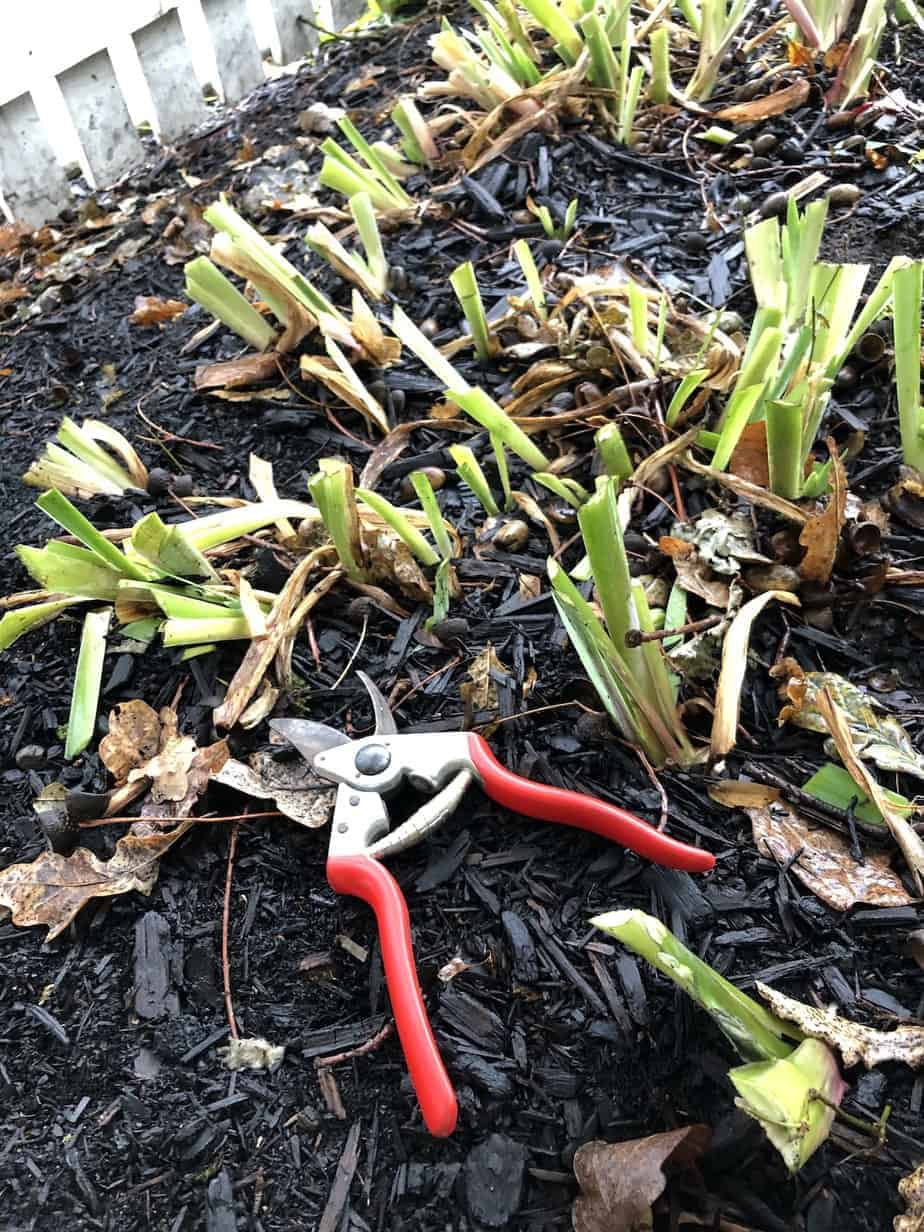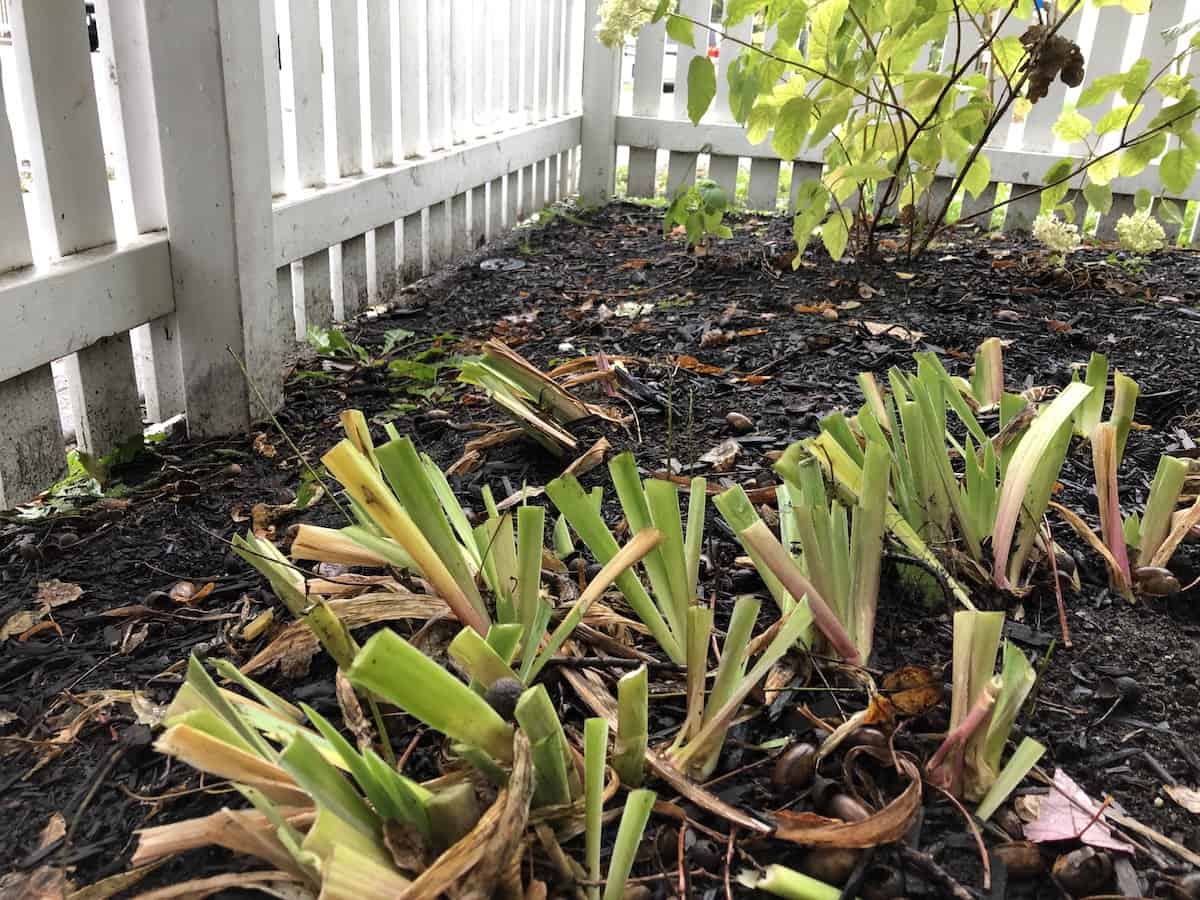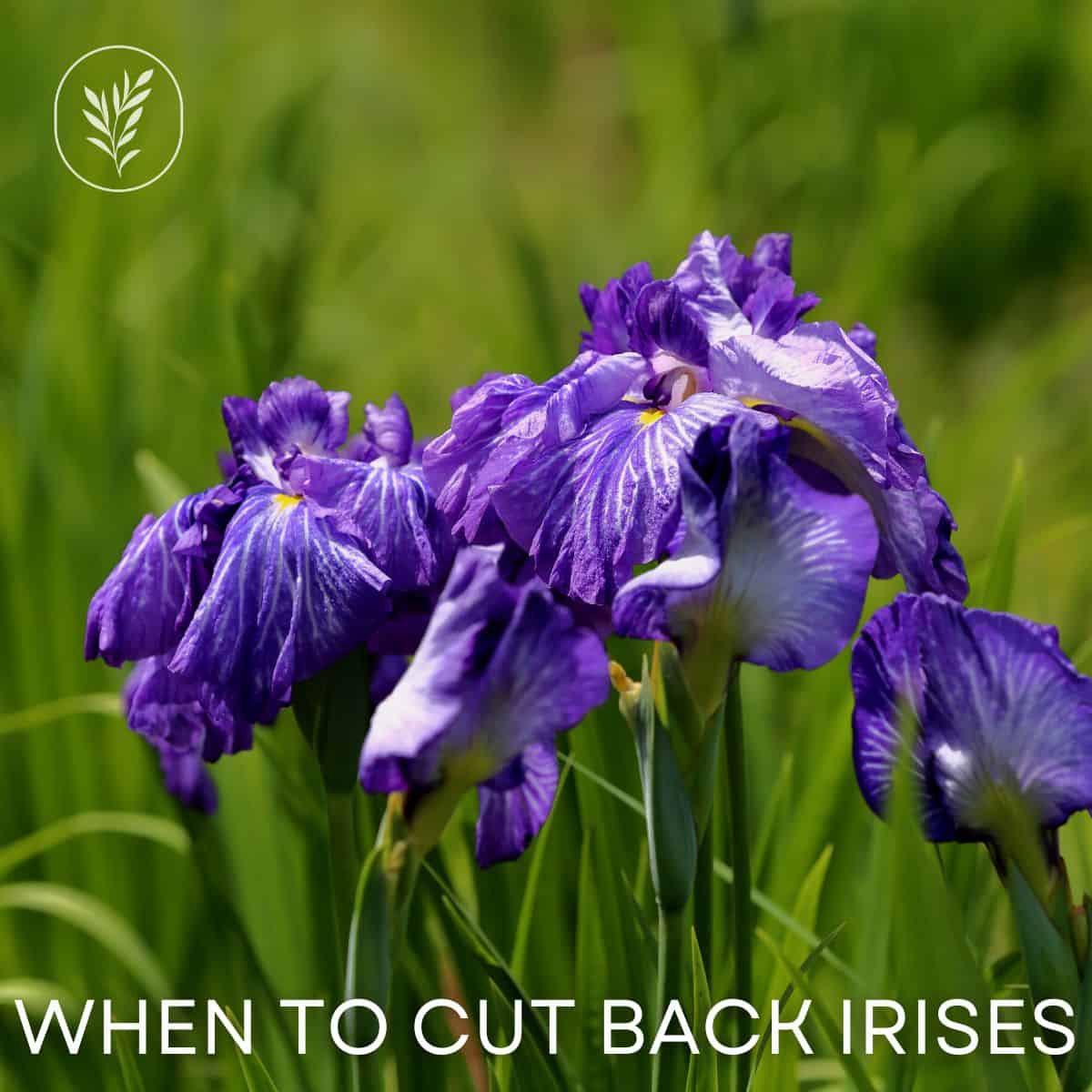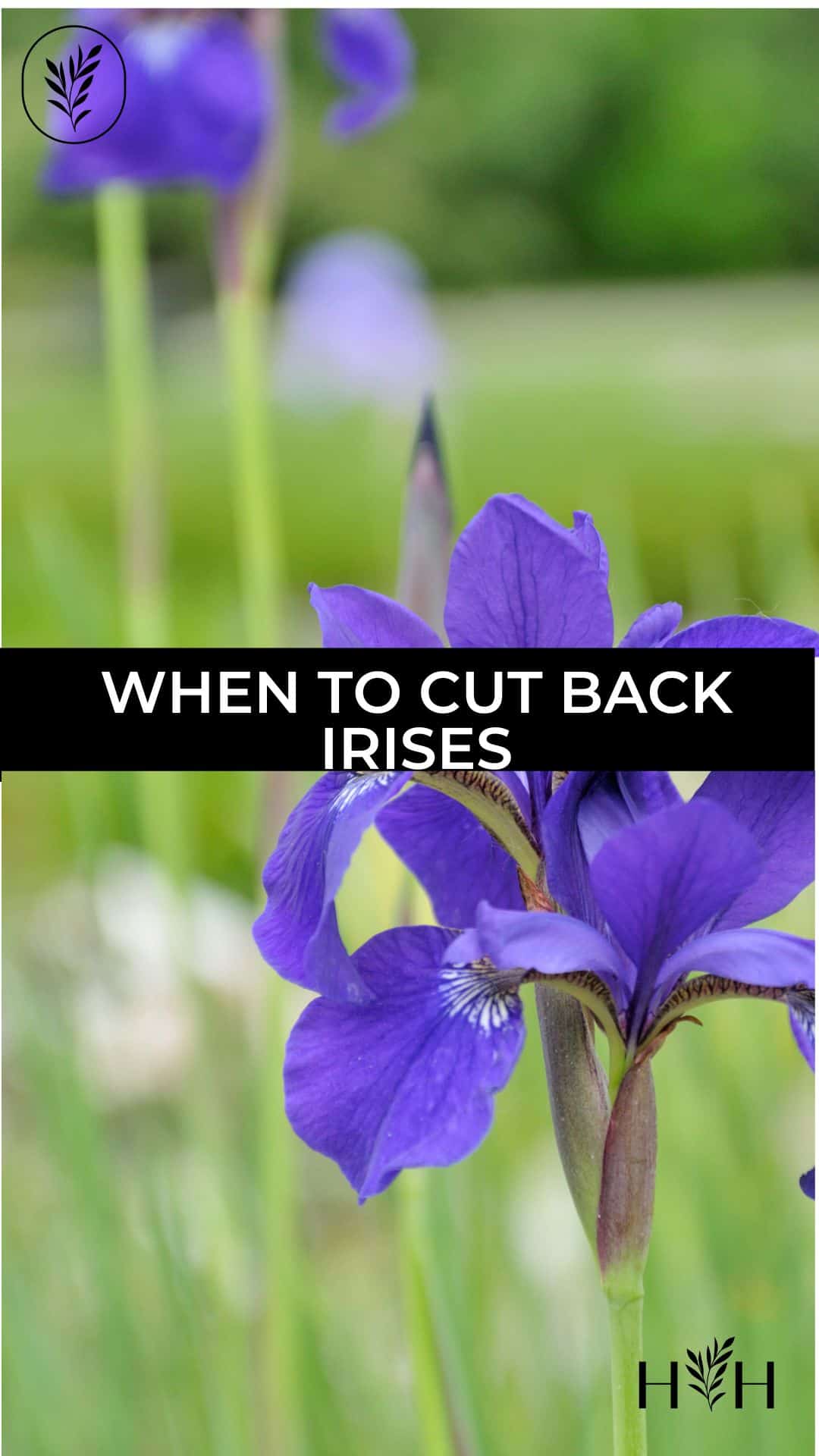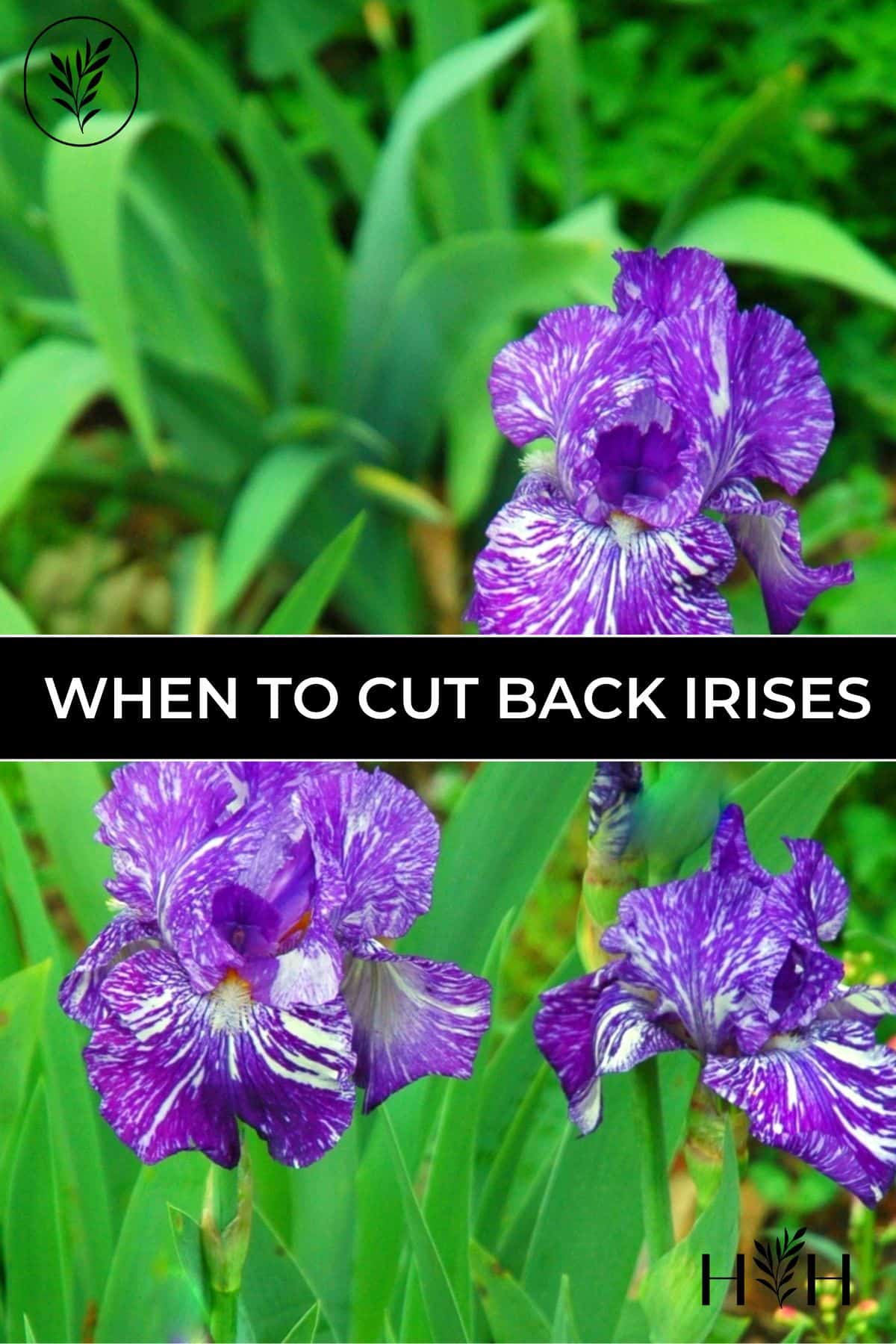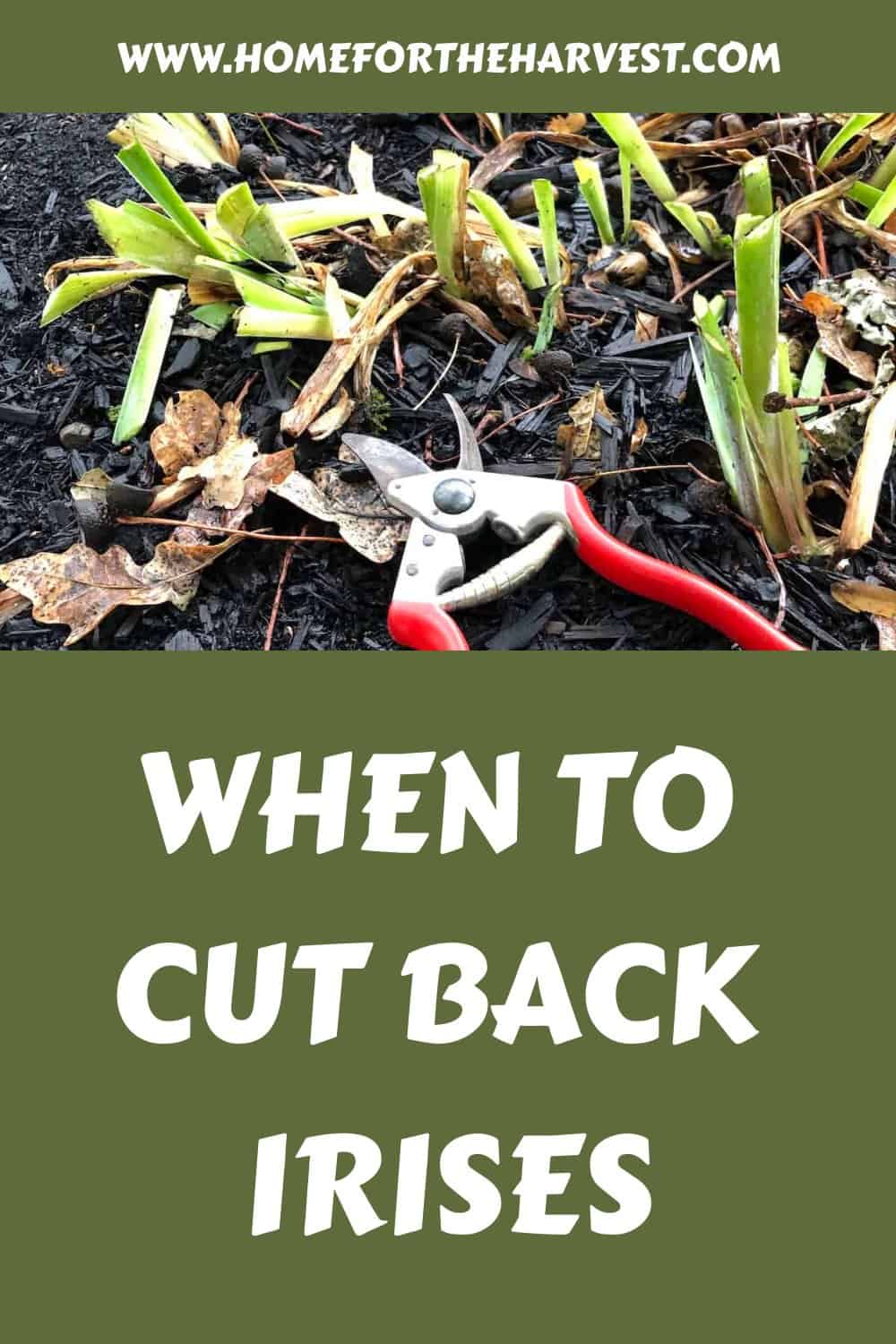Iris plants are known for their dramatic blooms and tall, sword-like fans of leaves. But what’s the best way to cut back irises each year?
Iris plants are best cut back in the fall. Spent flower stalks can be removed in spring after the plants finish blooming, but the foliage should be left standing through summertime. In mid-autumn, cut the leaves back to about 3″ long above the soil line (here’s a video showing how). Then remove the trimmed foliage from the area, rake away autumn leaves, and pull back any other debris covering the rhizomes.
While these plants are very forgiving, there are a few tips and tricks for timing when to cut back irises and how best to do it. Read on to learn all about how and when to cut back iris flowers!
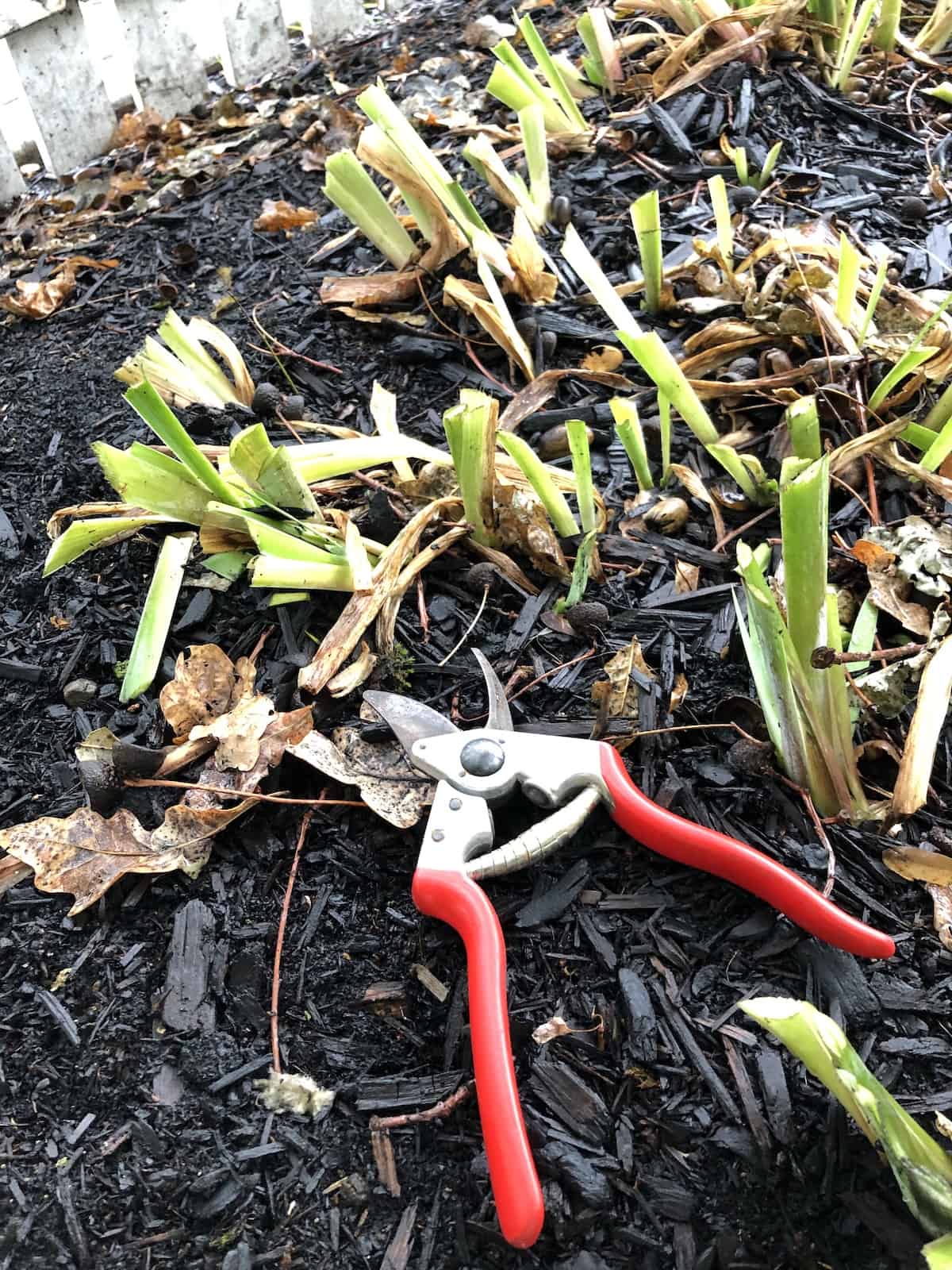
When to cut back irises
Summertime iris care consists of removing the spent flower stalks, as well as any leaves that are damaged or dead/dying. The majority of foliage should stay on the plant into autumn to allow the plant to create energy for its roots via photosynthesis. Leaves can be removed in the fall by trimming them down to a few inches above the soil line.
Iris plants are generally cut back in autumn. The leaves can be left to die back naturally at the end of the growing season, or they can be cut back when crisp, freezing weather is in the forecast. The iris foliage and other debris are removed from the garden area in the fall, leaving the tops of the rhizomes clear and ready to sprout up the following spring.
“In the fall, scissor the leaves back to 3-inch fans to avoid a major spring cleanup of soggy leaves.”
The Harrowsmith Perennial Garden: Flowers for Three Seasons, by Patrick Lima
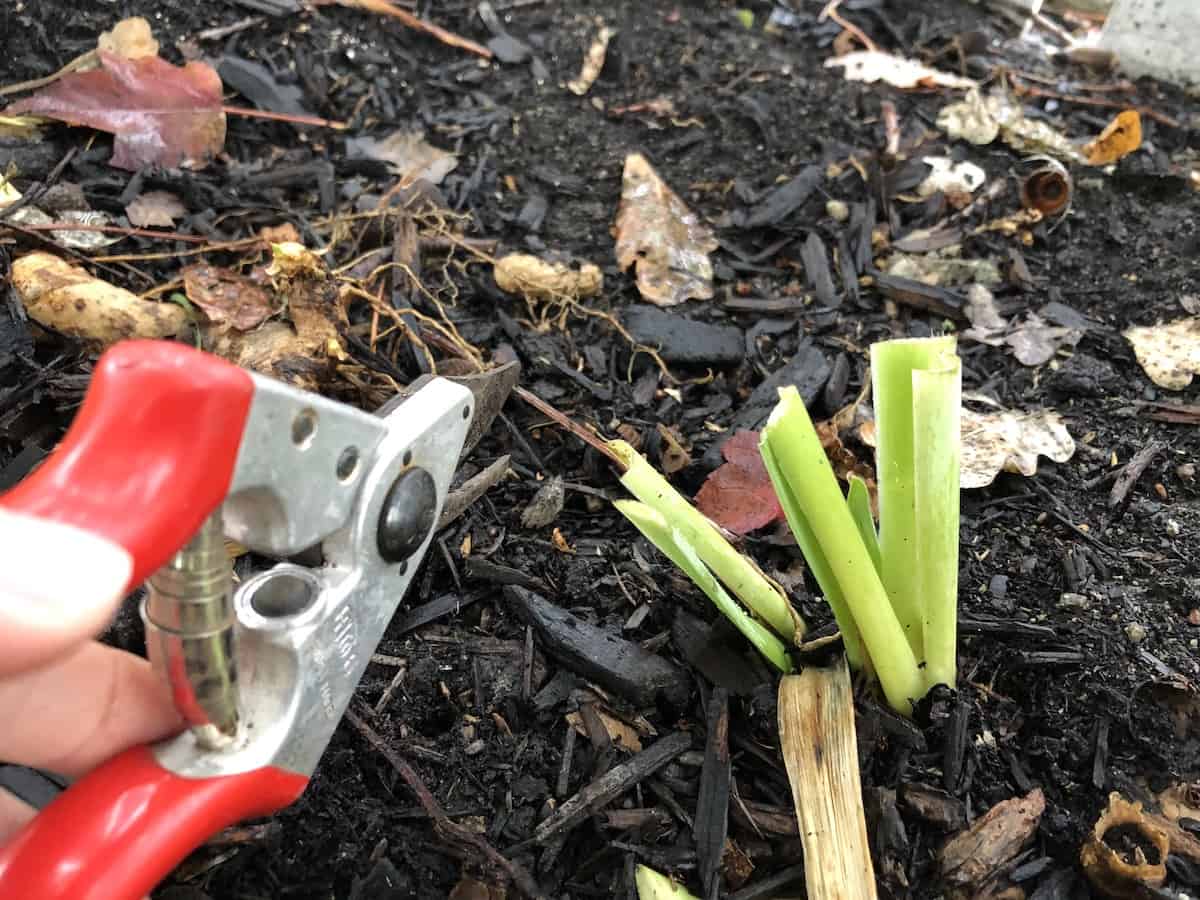
How to cut back iris plants in autumn
Cut back iris plants so that the foliage is about 3″ long above the ground. Use sharp garden scissors or pruning shears/secateurs to snip through the broad leaves. Try to make clean, crisp cuts, and be sure to take the foliage away from the area. Don’t leave the cut leaves on top of the roots to create a frozen mess during the winter!
Cutting back iris leaves is easiest with a pair of handheld pruning shears. When cutting back iris plants in the fall, healthy iris leaves can be added to your homemade compost. They will compost faster if you trim them into smaller pieces rather than trying to compost the big long leaves.
While you cut back the iris plants, take time to observe the plants for health. Look for iris borers, rot, or other signs of pest and disease. It is much easier to deal with pest and disease issues when they’re caught early! This is true for all bearded iris varieties.
“Be alert for iris borers, which lay eggs in the rhizomes to emerge as larvae with a built-in food supply; the larvae are pinkish white with black heads. Destroy infected plants and rhizomes, which often become mushy from bacterial or fungal infections that gain entry through the borer tunnels.”
Essential Perennials: The Complete Reference to 2700 Perennials for the Home Garden, by Ruth Rogers Clausen and Thomas Christopher
More fall plant care for irises
Fall is also the perfect time to plant new iris varieties. The range of new iris flowers available is absolutely stunning, and many newer introductions are re-blooming (will bloom more than once per year)! You’re sure to find one that will add to your garden. Iris bulbs can be ordered year-round, but are generally shipped in early fall.
Plant the new iris rhizomes shallow, typically with the top half of the rhizome exposed. Multiple iris bulbs/rhizomes can be set about 24″ apart in the garden.
Newly-planted iris rhizomes may not be as cold hardy as large, established clumps. In cooler zones, such as Zones 3-5, consider applying a thick protective winter mulch over the entire area. Wait until after the ground freezes before applying the mulch, and be sure to remove it in early spring.
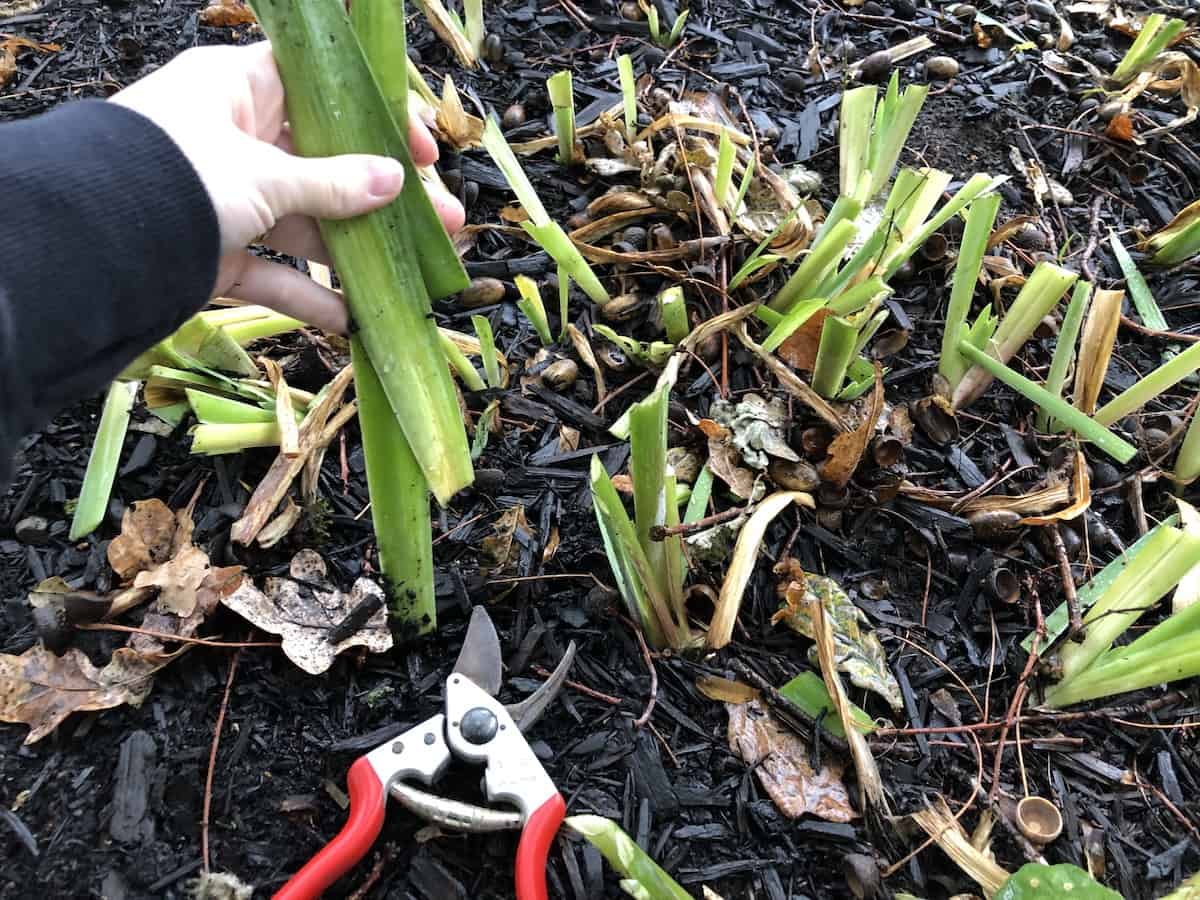
Summertime foliage care for perennial iris plants
Iris plants don’t need much care throughout the summertime after they’re done blooming in the late spring. Remove the spent flower stalks after they’re done blooming to allow the plant to channel its energy into its leaves and roots.
Throughout the summer, remove any leaves that are yellowed or damaged. You’ll also want to pick up debris from on top of the rhizomes and periodically pull back the mulch to ensure the rhizomes don’t get buried to deep.
“Care includes the removal of badly spotted or withered brown leaves from the outside of the fans once or twice during the summer and the clearing of debris from the rhizomes so that they can breathe and sunbathe. Otherwise, you’re apt to get soft rot.”
The Harrowsmith Perennial Garden: Flowers for Three Seasons, by Patrick Lima
Some iris growers do extra pruning of the leaves in late summer. This is done to let sunlight reach the top of the rhizomes, as well as allow for increased air circulation around the base of the plants before they go into dormancy. In this case, irises are cut back in two stages, a few months apart. This special partial cut-back process is only done for irises (not other spring flowers like tulips or daylilies).
In August, each iris leaf is cut back by about half its length. This leaves a fan of trimmed leaves standing about a foot tall above the soil. These half-leaves stay on the iris plant until fall frost arrives and the plant is further cut back to just above the ground.
“Traditionally the leaf fans have been cut to about 9 in. in late summer to allow sun ripening of the rhizomes.”
Essential Perennials: The Complete Reference to 2700 Perennials for the Home Garden, by Ruth Rogers Clausen and Thomas Christopher
